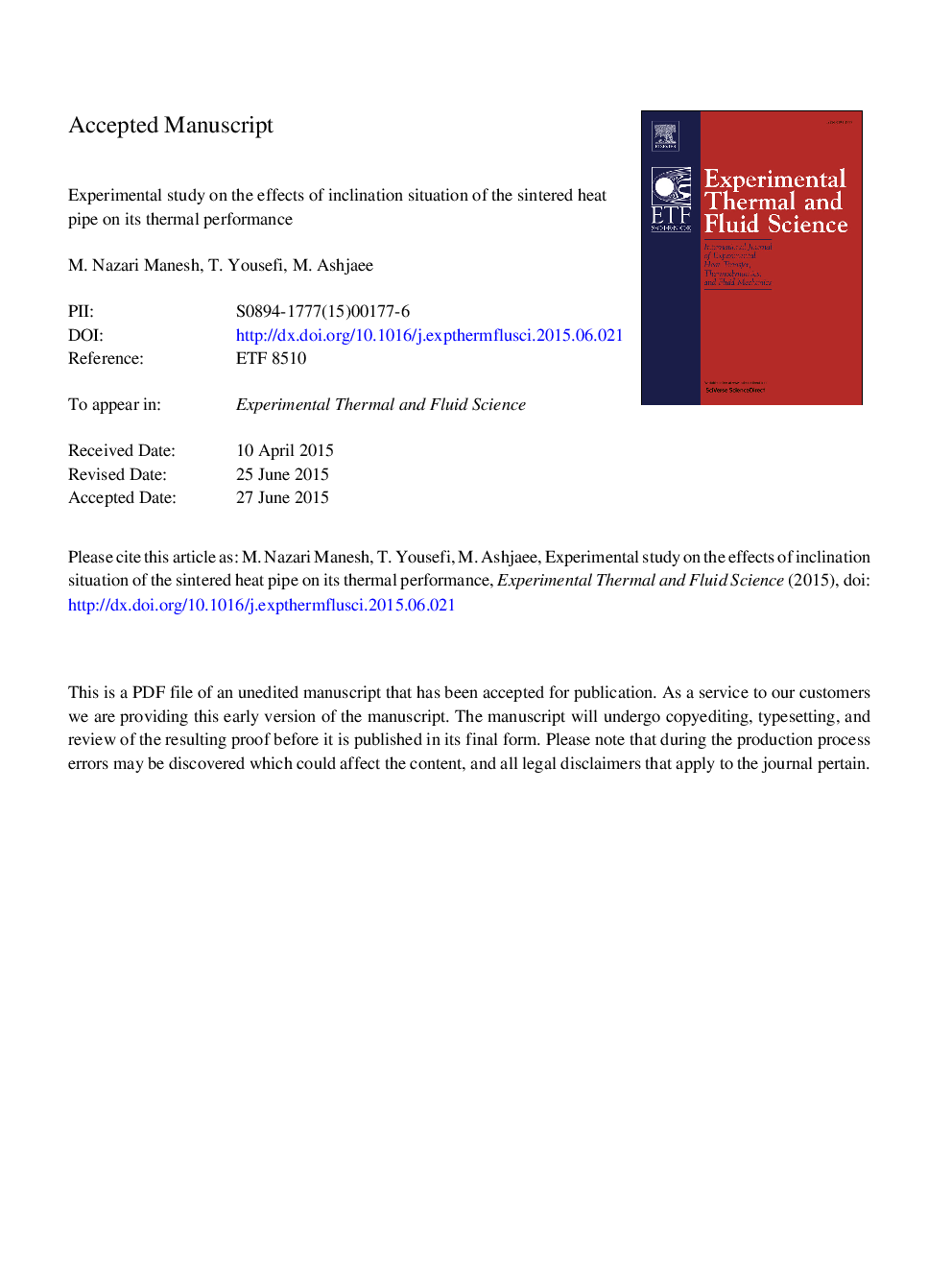| Article ID | Journal | Published Year | Pages | File Type |
|---|---|---|---|---|
| 7052235 | Experimental Thermal and Fluid Science | 2015 | 39 Pages |
Abstract
The heat pipe in question is of sintered type with a diameter of 6 mm and each branch length of 135 mm. The heat pipe was filled with equal amounts of silver nanofluid with base fluid ethanol and DI-water with concentrations of 10, 50, and 1000 ppm respectively. The respective percentages of volume concentrations are 0.1, 0.005, and 0.001. The entrance power was changed from 10 W to 40 W and the temperature of the cooling fluid was increased from 20 °C to 40 °C. In conclusion, with an increase in the concentration of the nanofluid, in most cases, the amount of thermal resistance undergoes a substantial decline and also Overall Heat Transfer Coefficient experiences a remarkable increase in all angles. The highest percentage of decline and rise is that of silver nanofluid with 50 ppm. Also, the angle for which the lowest amount of thermal resistance for silver nanofluid with 50 ppm is perceived is at +30° and the maximum percentage of decline in thermal resistance with an entrance power of 40 W and a temperature of 40 °C for the cooling fluid is 40%.
Keywords
Related Topics
Physical Sciences and Engineering
Chemical Engineering
Fluid Flow and Transfer Processes
Authors
M. Nazarimanesh, T. Yousefi, M. Ashjaee,
